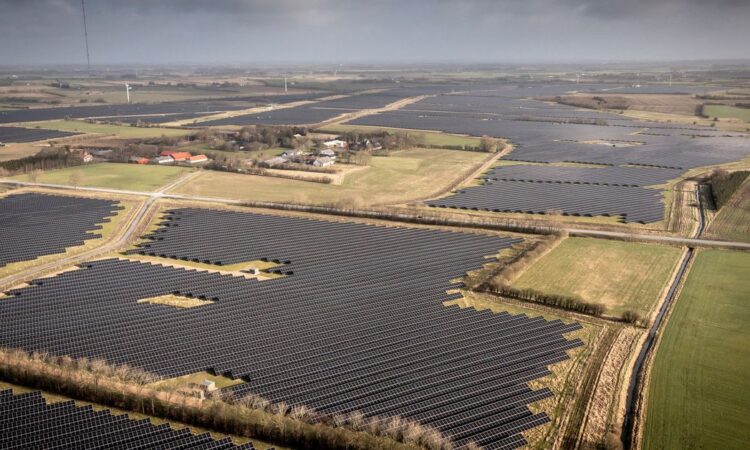
LITTLETON, Colorado, April 25 (Reuters) – EU countries approved sweeping changes to the region’s carbon trading scheme and emissions laws this week, making industrial pollution more costly while generating billions of euros for funds to be used to accelerate Europe’s energy transition.
Along with other recent legislation that applies levies to imported carbon-heavy products such as metals, fertilizers and cement, and extends emissions caps to transport sectors, the recent flurry of lawmaking represents a significant strengthening in Europe’s emissions management tools.
The policy moves come after two years of fierce debate and compromise among the European Union’s 27-member bloc, and have been celebrated by lawmakers as a key launch pad that will help Europe realise its emissions reduction goals while enabling key industries to successfully transition away from fossil fuel use.
However, the new laws and standards will also place fresh strain on several Europe-based businesses that are still reeling from the 2022 energy shock sparked by Russia’s invasion of Ukraine, and may lead to a further deterioration in relations between EU member countries, especially Poland and Hungary which voted against the carbon market reforms.
EMISSIONS TRADING TWEAKS
The European Union’s Emissions Trading System (EU ETS) is the region’s main device for managing emissions by providing financial incentives to cut pollution while penalising high emitters.
The key changes agreed to this week include a steepening in the planned drop-off rate of total EU emissions by 2030, and a phasing out of free permits that had been allocated to certain heavy polluters, including aviation.
Shipping firms will now also fall under the scope of the ETS for the first time, and so will now have to gradually reduce or pay new penalties for emissions over the coming years.
Emissions from Europe’s buildings, road transport system and other smaller industries will also come under a new trading scheme that will kick in from 2027 or 2028, depending on regional power and fuel costs.
WIDE REACH
Given the sweep of the tracking systems that underpin the existing and planned ETS schemes, virtually all major segments of Europe’s economy stand to be affected by the new laws.
Many key sectors such as manufacturers have already embarked on a rapid decarbonisation push, and stand to benefit from the growing volumes of low-cost renewable energy that will flow through Europe’s electricity grids come 2030.
As a result, the cost of compliance with the new standards may be relatively easy to stomach for firms and industries that are mainly powered off the grid.
Many households and offices in Western Europe will be in a similar position, thanks to large subsidies for heat pumps and energy saving infrastructure upgrades that should take the sting out of the impending emissions caps.
However, other important European industries, including chemicals producers, smelting and refining units, and the makers of glass, ceramics, paper and cement will have a tougher time meeting the new emissions caps while keeping costs in check.
Many of these sectors cannot be easily hooked up to the grid due to high power needs, and emissions from them can be hard to reduce without expensive facility upgrades that may undermine their international cost competitiveness.
Similarly, homes, offices and businesses that currently run off fossil fuel boilers or in countries that are fed mainly off coal and gas-fired grids will also have difficulty in economically complying with the new standards.
To help, some financial support will be made available for power system overhauls and facility upgrades, using the funding raised from the ETS and other sources.
But ensuring such support is paid in a fair, fast and transparent manner will be an enormous challenge, even for Europe’s vast bureaucracy.
Beyond language differences and varying power system set-ups, payouts will also need to factor in changes in subsidy levels for products and devices that may be deployed to cap emissions or reduce energy demand in different countries.
CROSS BORDER CRACKDOWNS
Another key piece of Europe’s new legislation is the introduction of a new Carbon Border Adjustment Mechanism (CBAM), which slaps new taxes on products that are imported from outside the EU for use by carbon-intensive industries.
This is designed to prevent companies moving heavy polluting parts of their supply chain to areas outside of the EU ETS catchment area, and ensure that companies cannot merely outsource the dirtiest parts of the production phase elsewhere.
However, this new mechanism runs the risk of eroding the cost competitiveness of hard-to-decarbonize sectors, such as steel and chemicals producers.
These sectors are also major employers across Europe, and sustain lengthy and labour-intensive supply chains that may also be at risk if the main production hubs of those industries cannot be economically sustained in the region.
Europe’s lawmakers are acutely aware of these and other risks, and have tried to come up with remedies for them during the protracted debate phase that preceded this week’s policy approvals.
But as was made clear by the no votes by Poland and Hungary, as well as the abstentions by Belgium and Bulgaria, the new measures are not universally popular due to the higher costs and more stringent emissions thresholds that come with them.
The key now for Europe’s lawmakers is to ensure that many of these new hurdles can still be cleared by key industries without undermining the economic competitiveness of the entire region.
<The opinions expressed here are those of the author, a columnist for Reuters.>
Reporting by Gavin Maguire; Editing by Christopher Cushing
Our Standards: The Thomson Reuters Trust Principles.
Opinions expressed are those of the author. They do not reflect the views of Reuters News, which, under the Trust Principles, is committed to integrity, independence, and freedom from bias.






